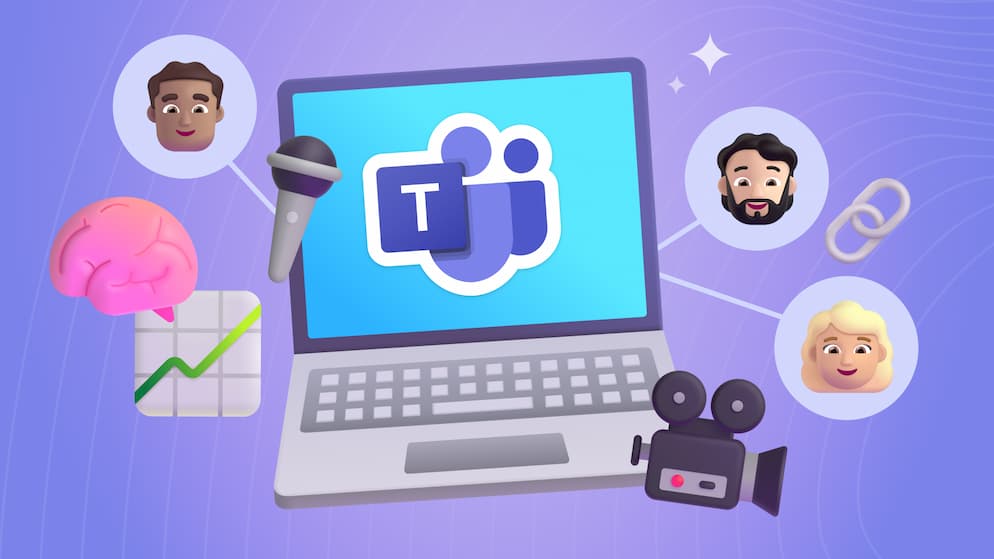How to Utilize Teams for Project Management
Features in Microsoft Teams can be channeled to support specific purposes, such as project management. Let’s dive into how Teams can be used as a powerful project management tool.
Intro
Microsoft Teams has become the hub of the workday. It’s an all-encompassing solution to an array of business needs. Users can store files, collaborate on documents, view and save files, and communicate with team members all without leaving the Teams app. We can channel the benefits of Teams in a way that covers all aspects of project management, from communication, collaboration, task management, status reporting, and even integrating with any outside applications your team uses. Let’s get into some key features of Teams that enable project managers to ensure success on any sized project.
A Central Source of Truth
How often in projects are people wondering where documentation is, what tasks are assigned to them or when those tasks are due? Creating a central source of truth that is easy and intuitive for team members to access is critical to running a successful project. Microsoft Teams’ ability to integrate with so many other applications is a huge advantage. Users don’t need to leave theTeams interface to access anything needed for the project, from schedules to to-do lists, to project notes or conversations. I can eliminate the need for anyone to ask where documents, notes, or tasks are.
Organization
Keep projects organized by utilizing Teams, Channels, and Tabs. Well-run projects have open and transparent communication and information flow amongst the project team. This keeps the team on the same page and moving forward, together, while swiftly eliminating impediments. Teams and Channels provide the ability to categorize your project and store documents and conversations accordingly.
Additionally, organizing your project in teams automatically resolves any security concerns. When you create a Team, Microsoft also automatically creates an associated SharePoint team site, a Microsoft365 group, OneNote Notebook, and other M365 Applications. All of these resources take on the permissions you created when creating the team, so you can utilize any applications while maintaining the organization and security you’ve established for your project.
To demonstrate the organization's capabilities, let’s walk through a basic project setup. One of my favorite ways to set up Teams and Channels for project management is to create a Team for each client and set up each project as a new Channel under that Team. This keeps all communication, files, and artifacts for each project easily located within the project channel.
.png)
Next, I use Tabs to separate the different aspects of a project – in this example, I have the tabs set up as follows:
.png)
I’ll walk through each of these tabs and highlight the advantages.
Posts
Here is where we can communicate about the project or specific project artifacts. This area supports everything from quick chats, collaboration on files, or full announcements. Conversations are transparent to the rest of the team who may find them valuable in their work, as well as easily referenced later.
Files
Whenever you create a new channel in Teams, a SharePoint site is automatically created, along with the 'files' tab in your channel. Each channel is a different document library which can be organized however you want. This allows you to store all documents related to your project directly in the associated Team’s Channel. Documents stored here can be co-authored by anyone who has access to the channel. You can store, access, and co-author Word documents, PowerPoint decks, Excel spreadsheets, and more, all without leaving the project’s channel in Teams. Your team will always have access to the most current version of any document related to your project, with no saving and no emailing back and forth. Documents can also be discussed in the posts tab of the channel so that teams can communicate about documents, again, without leaving Teams and without storing documents in separate places.
Notes
This is a location for meeting minutes and any other documentation related to the project. Mine is connected to a OneNote Notebook which takes on the same permissions as the project. This happens automatically when you add a new tab and select OneNote, but you can use whatever note-taking tool you prefer.
.png)
.png)

SELF ASSESSMENT
Is your business getting full value from your M365 subscription?
Billions of dollars are wasted each year on underused subscriptions. Take 3 minutes to find out where your tools are driving results, and where they’re holding you back.
Find Out Now

Is Team Communication Holding You Back?
Find Out in Just 2 Minutes.
Take our quick scorecard to uncover communication gaps and hidden barriers within your team.
Tasks
Task management is a huge aspect of project management. It’s important to keep tasks visible, updated, and tracked. I always add a 'tasks' tab that is linked to the task management tool that specific project is using. Teams integrates with several popular project management applications from the web, which can be added as a tab within your channel so that your team can seamlessly view an outside app from within Teams. For basic projects, I like to use Planner for task management. Because creating a team automatically creates an M365 group, I can set up a new project in Planner and associate it with my project group.That way, it’s automatically included the same members of my project team. A new board can be created right from teams when you add Planner as a tab. First, click the `+` sign to add a new tab, and find Planner:
.png)
Then create a new plan:
.png)
From here, I can create, assign, and track tasks, all within Teams. Everyone on the project will always know where to find their tasks or to check on the status of important items.
.png)
I can also quickly change the view to see dashboard-type updates on my projector a calendar view of the schedule:
.png)
.png)
Whiteboard
Adding a tab for the Whiteboard app provides teams an easily accessible place to collaborate on ideas or thought exercises. This can be shared during a Teams call, and the project team can work on boards together. When finished, these boards are stored right along with the rest of the project and can be easily referenced later. If you don’t like Microsoft Whiteboard, you can add a tab to pretty much any popular tool.
Templates
Teams are highly customizable. Once you explore the integrations and the different ways you can set up the tabs, you’ll discover what works best for your team or a certain type of project. Once you have a preferred way to run projects, you can save the channel and tab set-up as a template, making your next project set-up that much easier.
We have a whole video and blog article on that if you’d like to learn more about how to set up templates. Templates make it quick and easy to start a project, in a way that is organized and effective for your team.
Conclusion
Microsoft Teams has great potential as a project management tool. The ability to have so many tools and collaboration capabilities in one central place sets it apart. Above all, Teams keep work visible and accessible to everyone while providing a central source of truth of all aspects of the project. When project managers find the right integrations and simple customizations that work best for their project, Teams can be a one-stop-shop super tool for project management.




.avif)



.avif)





